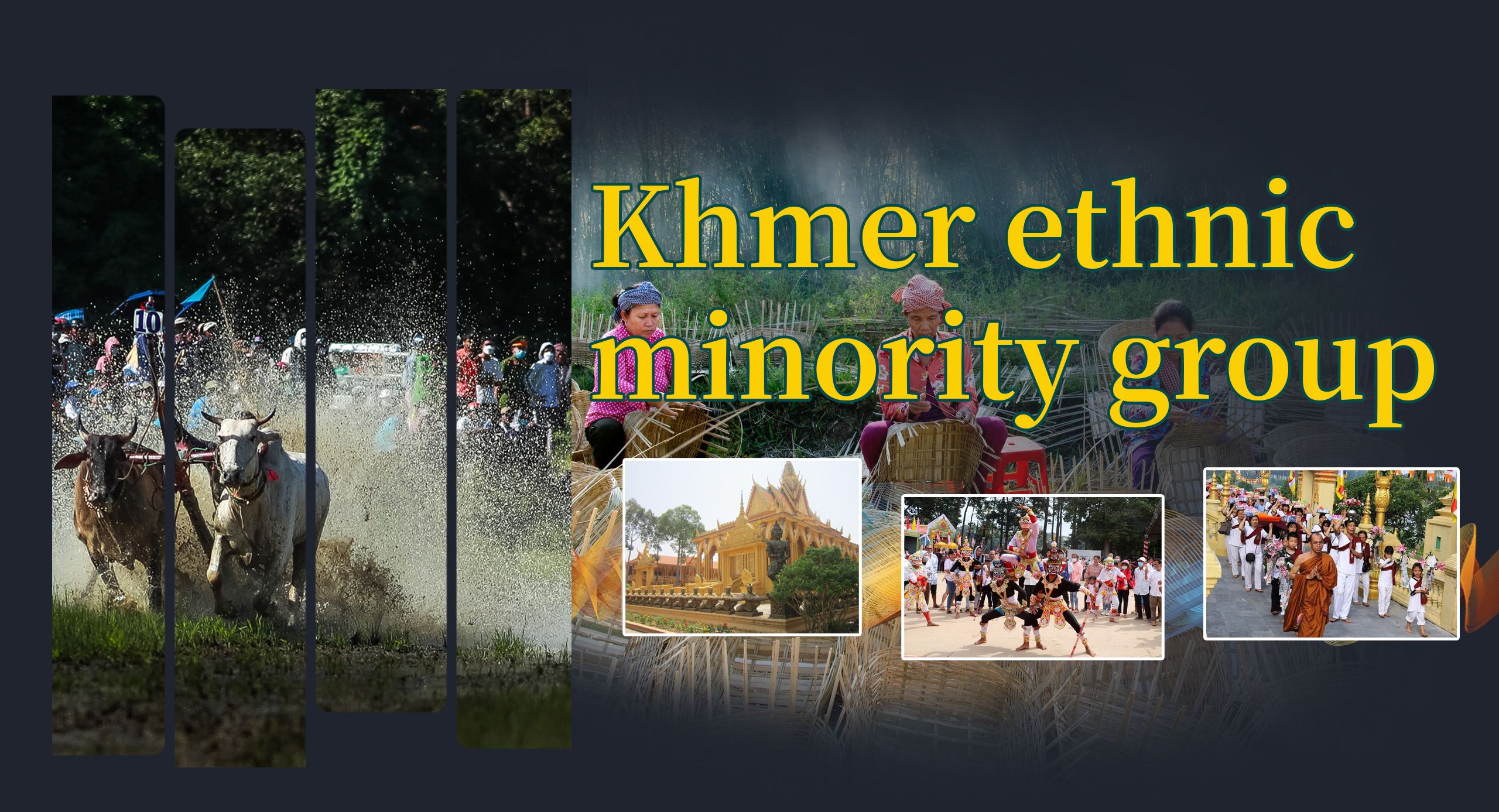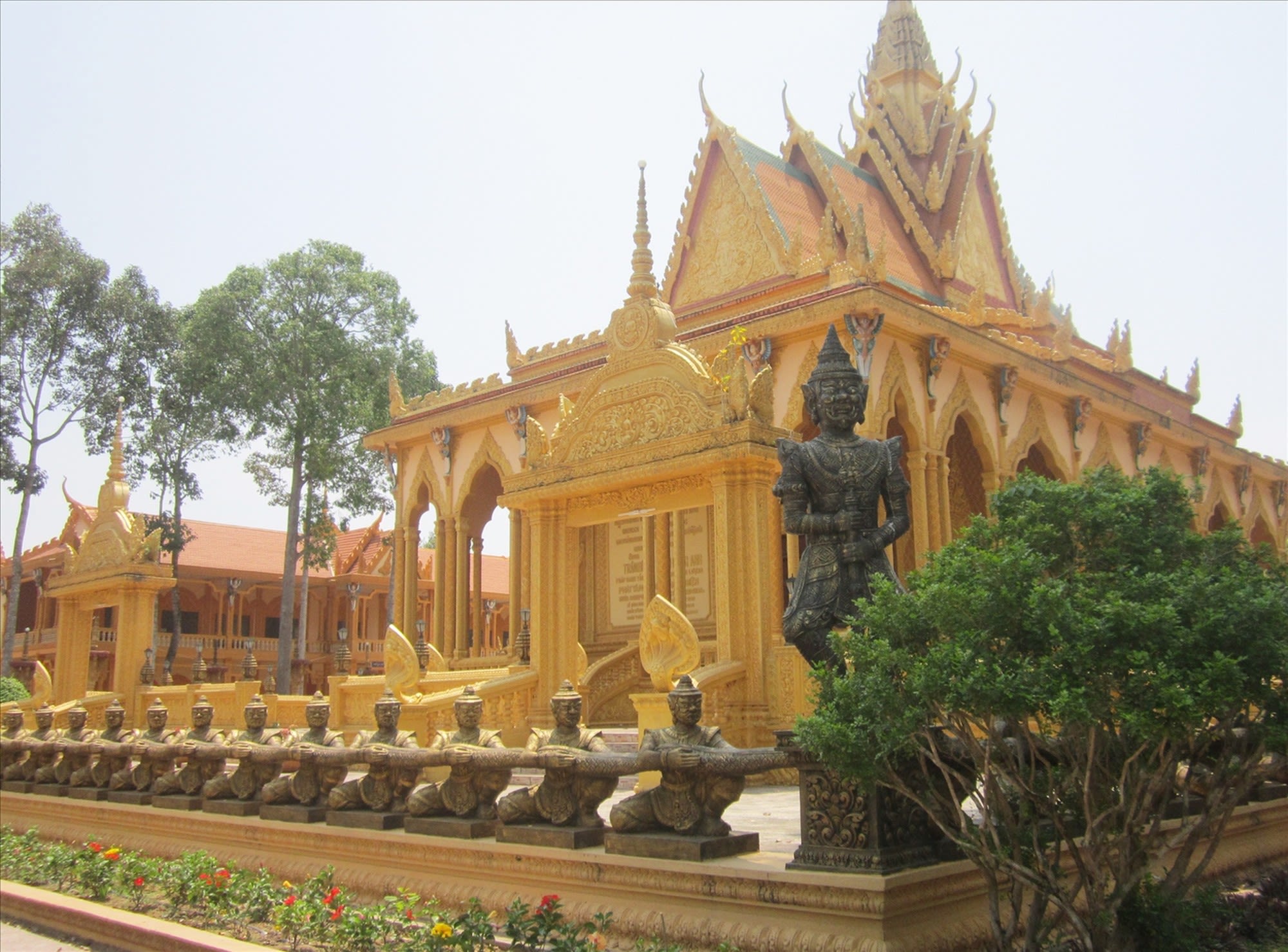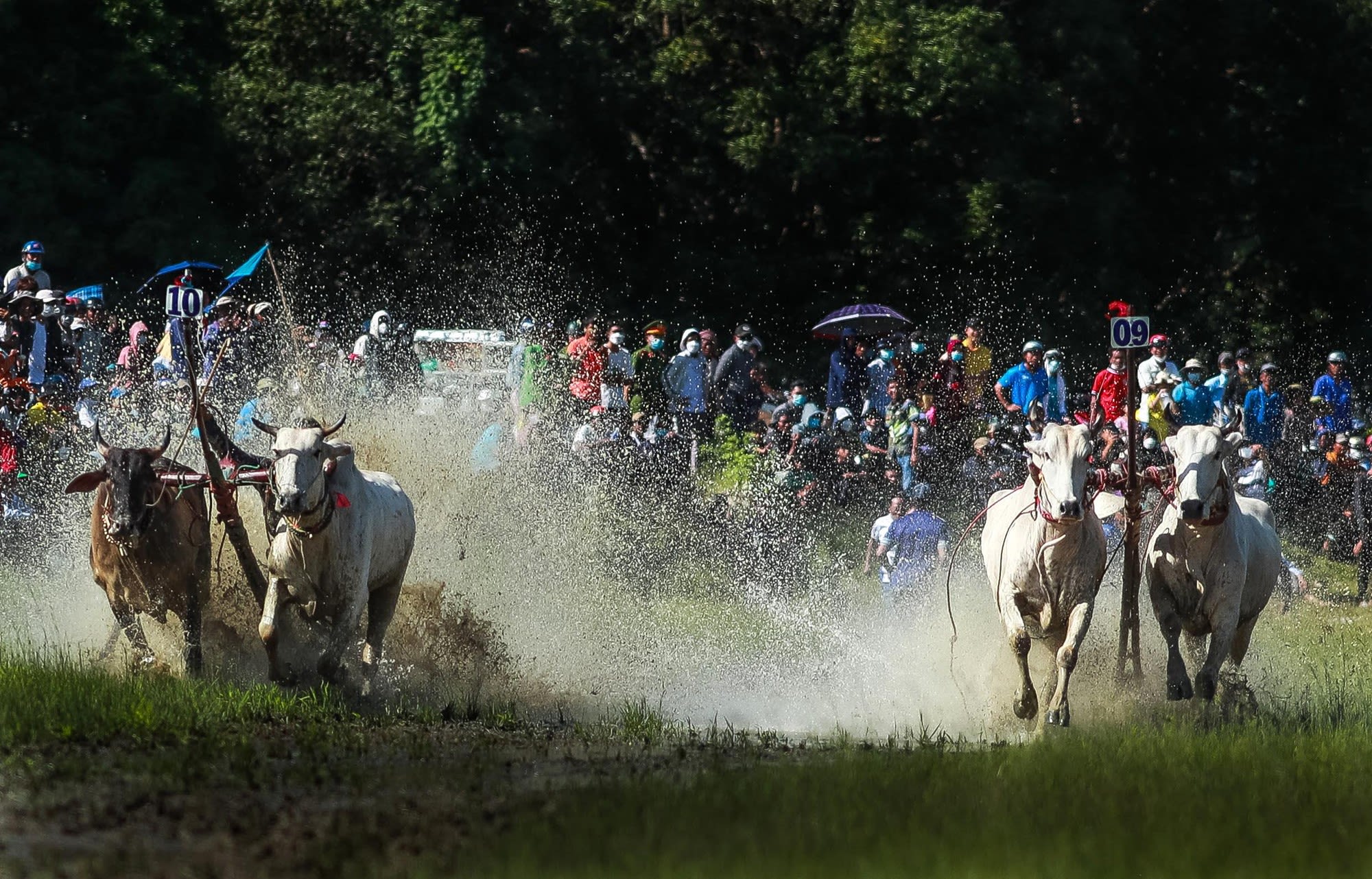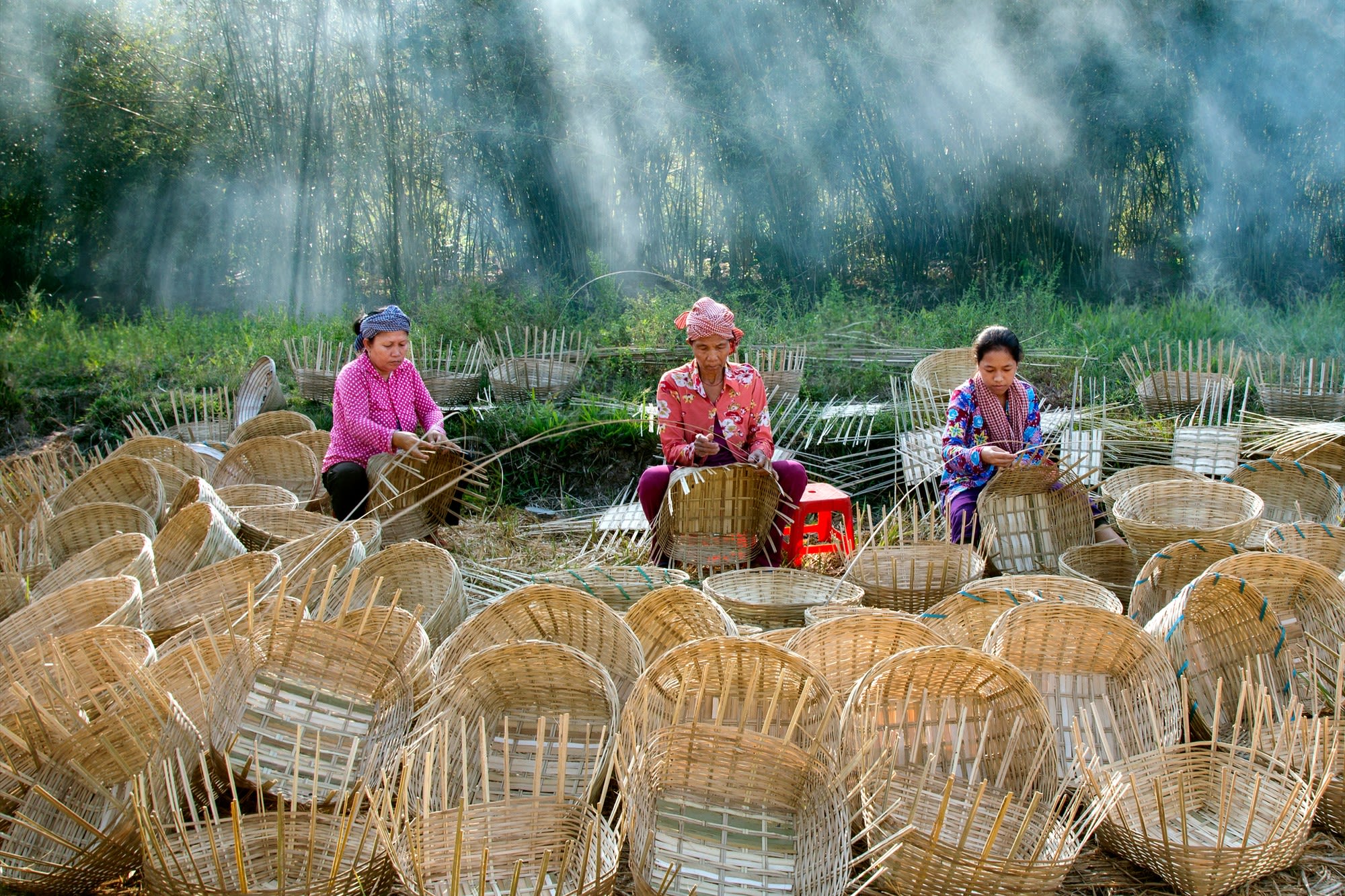
Other names: Khmer Krom, Khmer Loeu
Language: The Khmer people speak Khmer - a language belonging to the Mon-Khmer group in the Austroasiatic language family.
Residence: Based on ecological characteristics and natural environment, the distribution of Khmer people in the Mekong Delta can be divided into the following three main regions:
- Inland region: this is the first area to have been inhabited by the Khmer in the Mekong Delta.
- Coastal area: extending from Tra Vinh through Soc Trang to Bac Lieu.
- Southwest border mountains: belonging to An Giang Province and Kien Giang Province, where That Son mountain range, Sap Mountain, and Vong The Mountain can be found.
History: Many studies have confirmed that the Khmer people in Vietnam are descendants of immigrants from the Chenla Kingdom, a Khmer civilization considered to be the predecessor of the Khmer empire at Angkor. They migrated to this area in waves for a variety of reasons. Along with the Vietnamese and the Chinese, the Khmer were among the earliest populations in the Mekong Delta.
The Khmer are an indigenous ethnic minority with a very long history of settlement, mainly in the southern region of Vietnam, especially the Mekong Delta. They are one of the 54 ethnic groups in Vietnam with many unique cultural identities.
History
Many studies have confirmed that the Khmer people in Vietnam are descendants of immigrants from the Chenla Kingdom, a Khmer civilization considered to be the predecessor of the Khmer empire at Angkor. They migrated to this area in waves and for a variety of reasons. Along with the Vietnamese and the Chinese, the Khmer were among the earliest populations in the Mekong Delta.
In Vietnam, the Khmer also have a number of other names such as Khmer Krom or Khmer Loeu
Geographical distribution
Based on ecological characteristics and natural environment, the distribution of Khmer people in the Mekong Delta can be divided into the following three main regions:
- Inland region: this is the first area to have been inhabited by the Khmer in the Mekong Delta.
- Coastal area: extending from Tra Vinh through Soc Trang to Bac Lieu.
- Southwest border mountain region: belonging to An Giang Province and Kien Giang Province, where That Son mountain range, Sap Mountain, Vong The Mountain can be found.
Population and language
Population: According to census data on 53 ethnic minorities as of 1 April 2019, the total population of Khmer is 1,319,652 people, including a male population of 650,238 people and female population of 669,414 people. The average household size is 3.7 people while the percentage of population living in rural areas is 76.5%.
Language: The Khmer speak Khmer - a language belonging to the Mon-Khmer group in the Austroasiatic language family.

Vam Ray Pagoda in Vam Ray Hamlet, Ham Tan Commune, Tra Cu District, Tra Vinh Province - a Khmer temple. (Photo: Ethnicity and Development Newspaper)
Vam Ray Pagoda in Vam Ray Hamlet, Ham Tan Commune, Tra Cu District, Tra Vinh Province - a Khmer temple. (Photo: Ethnicity and Development Newspaper)
Main features
- Traditional social institutions: The Khmer people in the Mekong Delta live in Khmer's hamlets called 'phum' (consisting of 3-8 small families with kinship relationships) and villages called 'soc' (traditional self-governing social institutions). Blood relation and marriage are two of the basic relationships in 'phum', while neighbourly, territorial relations mixed with close kinship are the basic relationships in 'soc'.
- Religion and belief: Most of the Khmer people in Vietnam are followers of Theravada Buddhism. Buddhism plays a particularly important role in the spiritual lives of the Khmer. The teachings and commandments of Buddhism have become the norm in relations among the Khmer in 'soc'.
In addition, the Khmer also have folk beliefs and festivals that contain many Hindu elements that have been integrated into Buddhism.
- Housing: Khmer people used to live in houses or stilt houses. However, hardly any people still live in stilt houses anymore. For the past few decades, the Khmer people have all been living in houses.
- Clothing: In the past, Khmer men and women all wore silk sarongs that they wove themselves. Today's Khmer youth prefers to wear casual pants with a shirt. Elderly people often wear black 'ba ba' clothes (traditional clothes of the southern people), well-off men sometimes wear white 'ba ba' clothes with a 'khan ran' (a traditional black and white checkered shawl familiar to southern Vietnamese), which is always wrapped around their head, or over their shoulders. Only during wedding ceremonies do Khmer men and women wear their traditional clothes.
- Cuisine: The main food of the Khmer people in the Mekong Delta is sticky rice. 'Tuksamlo' (noodle soup with sauce made from various fish) is a favourite dish of the Khmer people, and is indispensable on the first day of the Tet holiday at the temple.

(Photo: Thanh Dat)
(Photo: Thanh Dat)
- Education: After the Southern liberation (1975), and especially in recent years, the issue of education development for the Khmer people has been given special attention by the State and local authorities at all levels and sectors.
According to results of 2019 census on ethnic minority groups, as of April 1, 2019, the percentage of Khmer people aged 15 years and over who can read and write in general is 76.7%, the net attendance rate for primary school is 100.5%; the net attendance rate of secondary school is 72.3%, the net attendance rate of high school is 35%, and the proportion of out-of-school children is 23.4%.
- Festivals: The Khmer people have a rich cultural and spiritual life. There are many special festivals in the festival system of the Khmer people, but Chol Chnam Thmay (a festival expressing the wish for a new year of favourable rain and wind, and bountiful crops), and Ok-ang Bok Festival (moon worshipping ceremony) are the two major festivals of the year.

Knitting craft of Khmer people in Soc Trang. (Photo: Tran Thi Thanh Kieu Phuong)
Knitting craft of Khmer people in Soc Trang. (Photo: Tran Thi Thanh Kieu Phuong)
Economic conditions
The Khmer people mainly live by cultivating wet rice. In addition, they also make a living by fishing, weaving, knitting, making palm sugar and making pottery. Their ceramic techniques are simple. Ceramic products mainly include houseware, most notably the 'Ca rang' (ceramic stove) and the 'Ca om' (ceramic pot) which are very popular among Vietnamese and Chinese people in the Mekong Delta. They also carry out trade, mainly selling surplus products and buying necessities.
According to the results of the 2019 census on ethnic minority groups, as of April 1, 2019, unemployment rate among Khmer stands at 2%, the percentage of trained workers with diplomas and certificates is 7%, the proportion of labourers working in the non-agricultural sector is 57.3%, the proportion of labourers working in management or technical qualification at high and middle level is 2.7%, the rate of poor households is 13%, the proportion of near-poor households is 12.8%, the percentage of households using clean water sources is 99.3%, and the percentage of households using grid electricity for lighting is 99.6%.